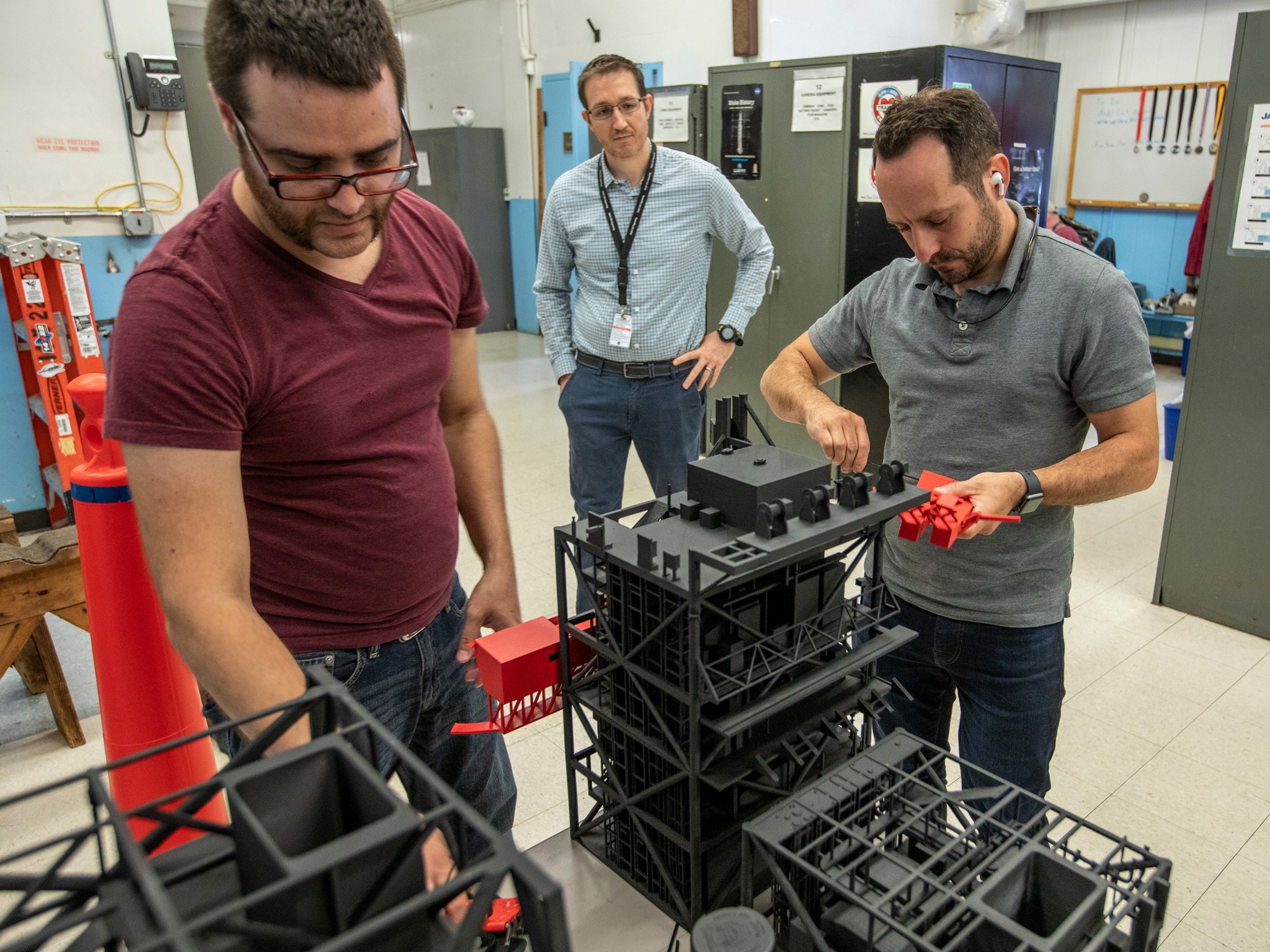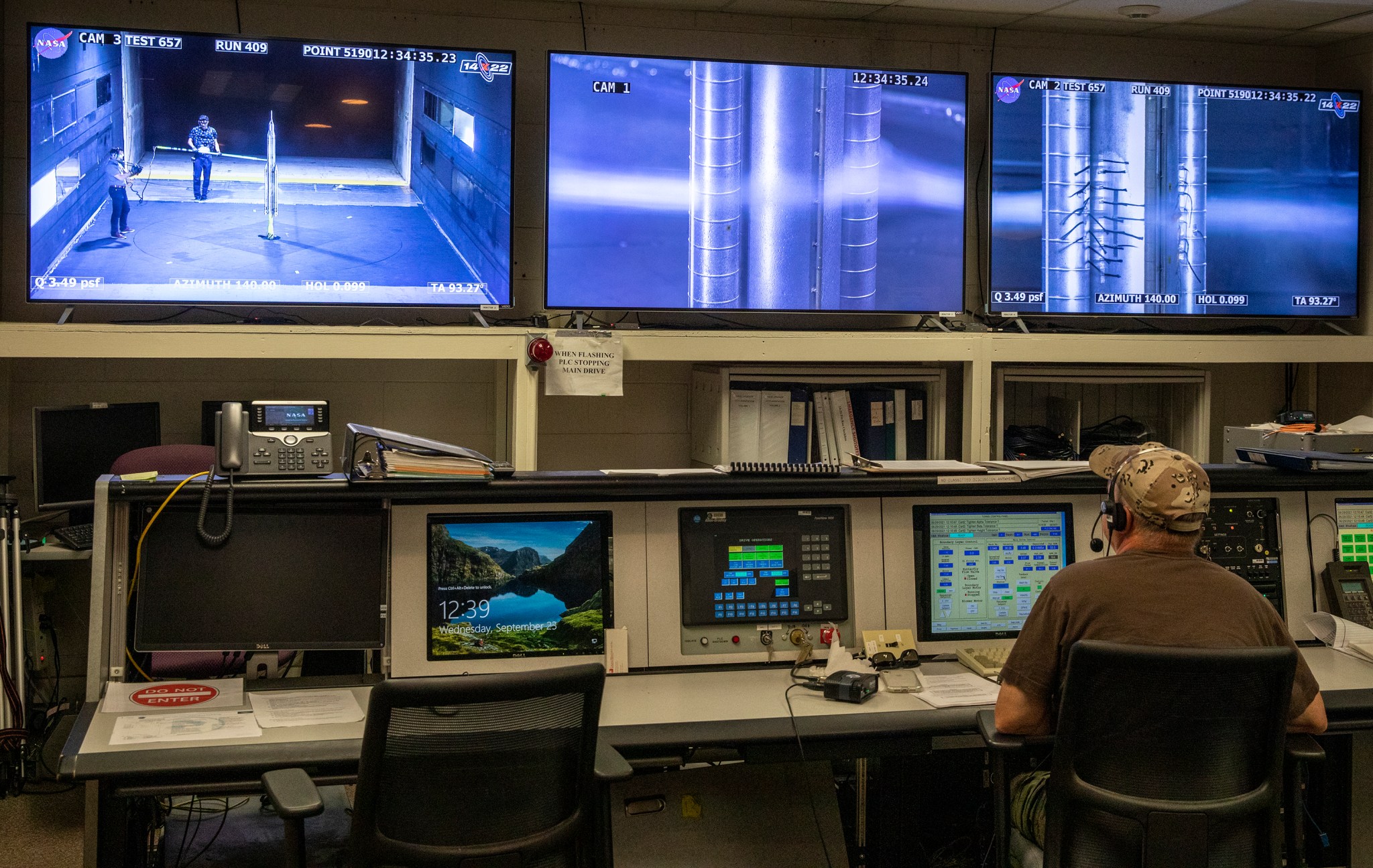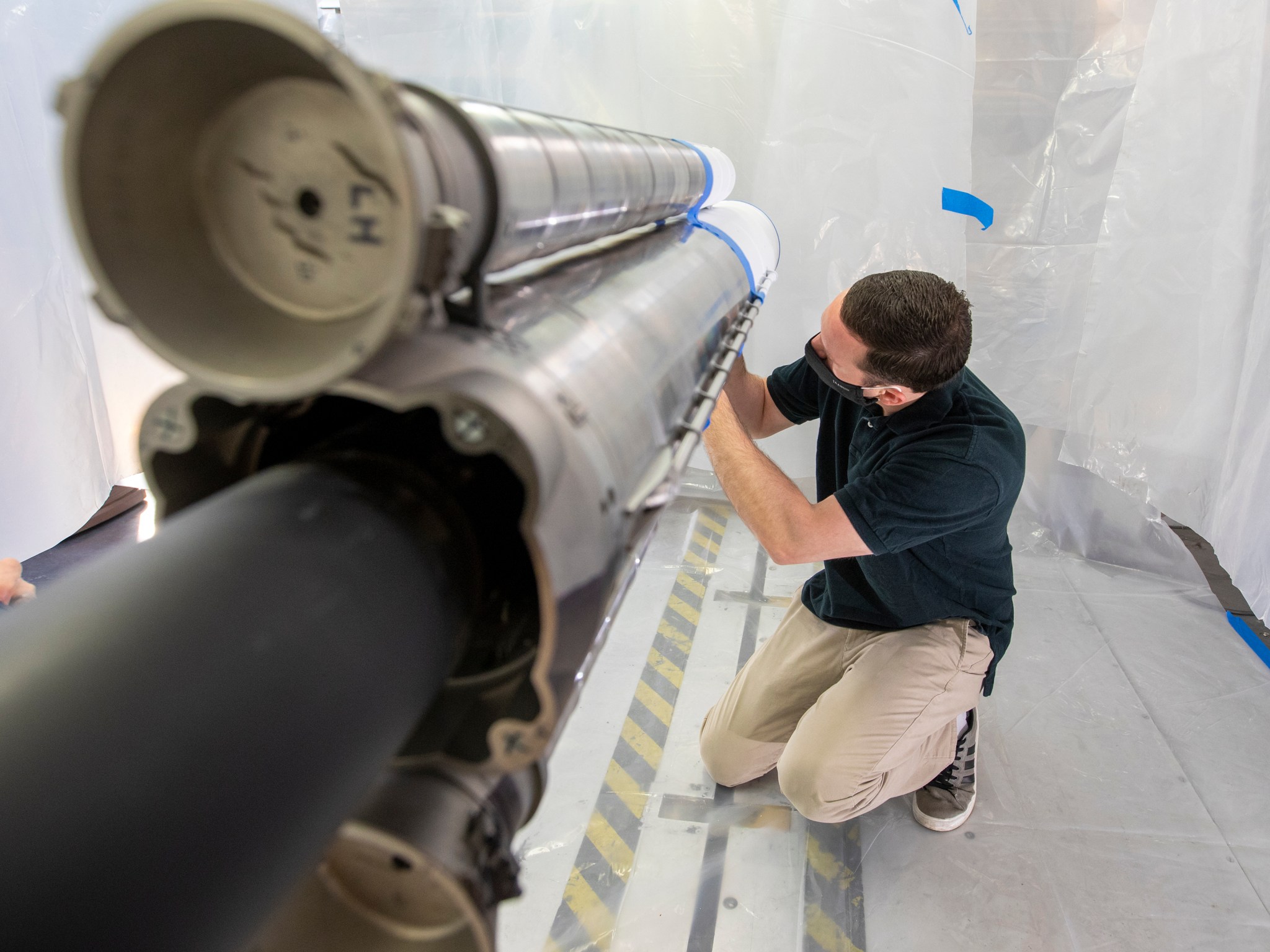As NASA stacks its Space Launch System (SLS) rocket in preparation for the Artemis I mission, researchers are completing testing in parallel looking ahead to later Artemis missions to ensure the next version of the rocket will safely transport crew and cargo.
The SLS aerosciences team at NASA’s Langley Research Center in Hampton, Virginia is working through a series of wind tunnel tests to better understand the changing pressures and wind loads exerted on the Block 1B version of the rocket during each phase of launch.
“During launch, SLS will produce 8.8 million pounds of thrust and will go as fast as Mach 5, or five times the speed of sound. That’s why for every single SLS rocket we come here and spend time characterizing these winds,” said Jeremy Pinier, SLS aerosciences team lead at Langley. “We’ve done all the work

from an aerodynamics standpoint for Artemis I, II, and III and now we’re working on Artemis IV, V, VI and on.”
This series of tests includes stops in several wind tunnels. Subsonic winds below the speed of sound, which is about 750 mph at sea level, are tested in the 14×22-Foot Subsonic Wind Tunnel at Langley. Supersonic wind speeds the vehicle will encounter during launch of Mach 1.6 – Mach 2.5, or 1.5 to 2.5 times the speed of sound at about 1,200 – 1,900 mph, are tested at the Unitary Plan Wind Tunnel (UPWT) at Ames Research Center in California’s Silicon Valley. High supersonic wind speeds experienced during launch of Mach 2.5 – Mach 4.5, or 2.5 to 4.5 the speed of sound at about 1,900 – 3,500 mph, are tested in the UPWT at Langley.
The team recently completed testing launch pad and lift-off scenarios with a six-foot tall scale model of SLS and the mobile launcher in the 14×22-foot wind tunnel. The mobile launcher structure for later Artemis missions will be taller with a different footprint from Artemis I, so any winds coming through the tower and hitting the rocket will behave differently.
The tests simulated the wind speeds the rocket and mobile launcher might encounter sitting on the launch pad and during lift-off from low wind speeds to tropical storm force winds. The rocket is designed to withstand the crushing forces it will experience during flight, and this testing will ensure it can also withstand high perpendicular wind loads that could occur on the launch pad. The design must account for when the core stage is untanked, making it lighter and more flexible than when it is loaded with fuel that helps keep it stable.
“The lift-off and launch environment is the most complicated airflow that we have to study,” Pinier said. “The rocket, launch pad, and mobile launcher make up a huge structure that’s complex and it makes the air flow ‘dirty,’ or not smooth, so it’s difficult to characterize both in wind tunnel testing and in computational fluid dynamics simulations on our supercomputers.”
In addition to expected conditions before and during launch, the team also tested several emergency scenarios, including if the crew has to exit the Orion spacecraft while it is still on the launch pad. The crew access arm would extend, and the crew would have to open two doors and exit the rocket 350 feet off the ground.
“We can’t see wind, but it’s there, and it’s strong, and it can present challenges,” Pinier said. “We’re helping study those egress situations so that if something bad happens on the launch pad, the astronauts can get to safety quickly. Hopefully, we never have to deal with this, but because we have humans onboard, we have to think about these situations.”
Some of the testing also included smoke flow visualizations, where glycol is heated through a smoke wand and comes out as a vapor to allow researchers to see the airflow. Seeing
the airflow allows the team to gather further evidence to back up the data gathered during the wind tunnel tests.
Earlier this year, engineers also completed testing at Langley’s National Transonic Facility. The test results help validate computer models of how SLS might perform in a more turbulent airflow. Recreating those flight conditions is difficult and the facility allowed researchers to test situations when the vehicle might encounter more turbulent airflow than expected.
The next test will take place later this year in Langley’s UPWT with a scale model SLS rocket that is about 30 inches tall in high supersonic wind speeds. The final tests at the UPWT at Ames will take place in 2023.
SLS will be the most powerful rocket NASA has ever built, enabling astronauts to return to the Moon on Artemis missions. With Artemis, NASA will land the first woman and the first person of color on the on the lunar surface, establish a long-term presence at the Moon, and prepare for human missions to Mars. SLS and NASA’s Orion spacecraft, along with the commercial human landing system and the Gateway in orbit around the Moon, are NASA’s backbone for deep space exploration.





























